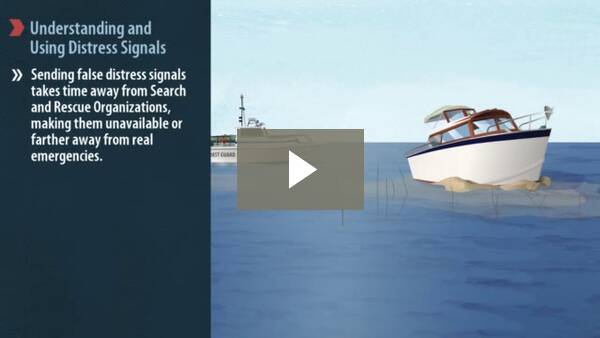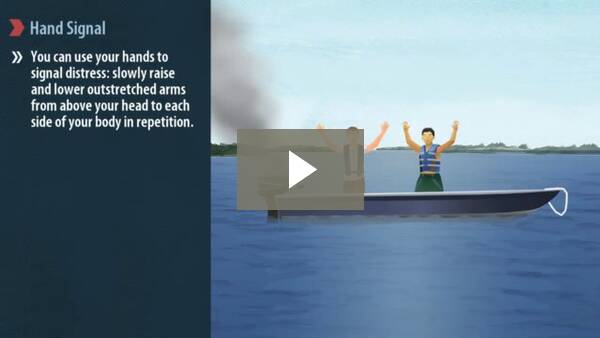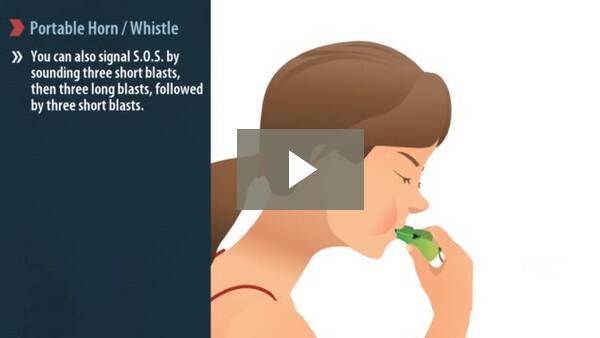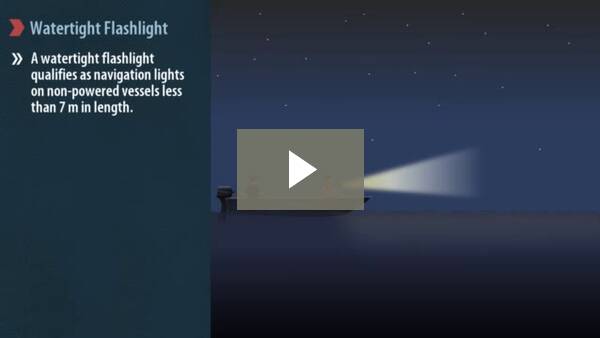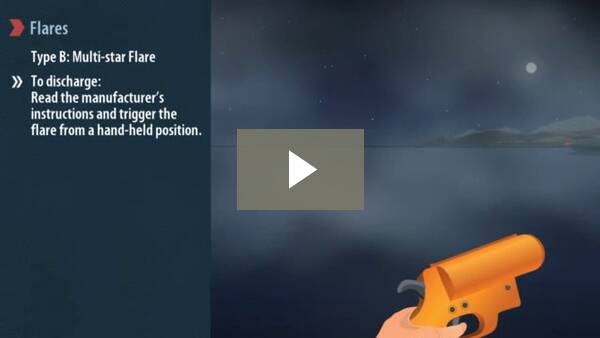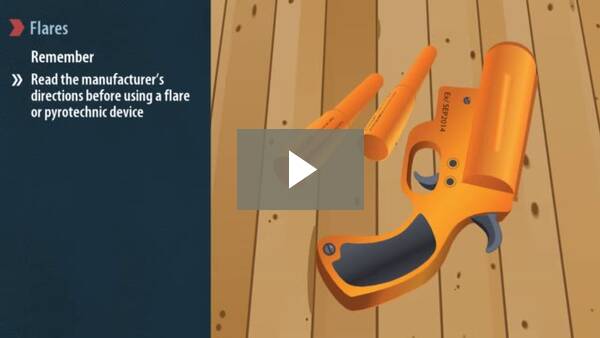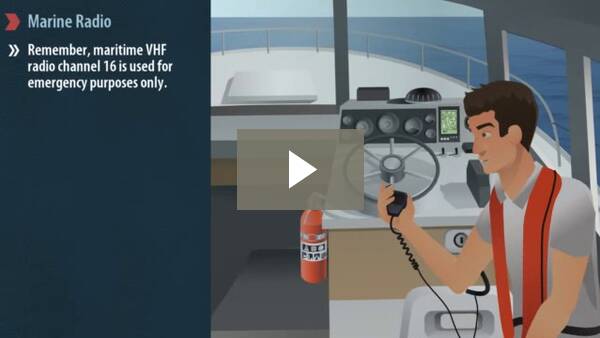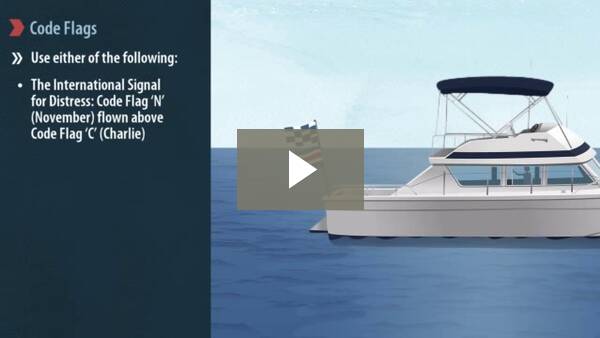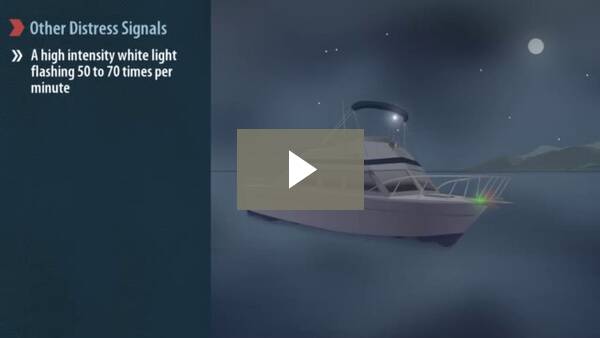Understanding and Using Distress Signals
Pleasure craft operators must be able to recognize, use and properly exhibit distress signals as required by the Small Vessel Regulations.
Depending on the size of your craft, and whether you are operating a power or sail-driven vessel, you are required to carry certain types of distress signals.
Remember:
It is an offence to make or report a fake distress signal. Sending false distress signals takes time away from Search and Rescue Organizations, making them unavailable or farther away from real emergencies.
You are required to render assistance to any person, vessel or aircraft that signals distress. You are also required to offer assistance if you respond to a distress call and are asked by the vessel in distress to render assistance. If it is unreasonable (unsafe) to offer assistance, you are not required to help.
Hand Signal
You can use your hands to signal distress: slowly raise and lower outstretched arms from above your head to each side of your body in repetition.
Portable Horn / Whistle
You can use a portable horn or whistle to signal distress by continuously sounding it in one minute intervals. You can also signal S.O.S. by sounding three short blasts, then three long blasts, followed by three short blasts.
Other sound signalling devices:
You can signal distress by continuously sounding a fog-signalling device. You may also use a gunshot or other explosive sound-emitting device fired at one minute intervals.
Watertight Flashlight
A watertight flashlight can serve as an effective distress signal at night or during periods of reduced visibility. To signal distress with a flashlight, flash S.O.S. – three short flashes, then three long flashes, followed by three short flashes.
Flares
There are 4 types of flares approved for use in Canada: Types A, B,C and D.
Type A: Parachute Flare
To discharge this aerial flare, read the manufacturer’s instructions, hold away from your body, and pull the release mechanism. When launched, this red light flare reaches a height of approximately 300 m and burns for at least 40 seconds. This type of flare can be seen from water, land and air.
Type B: Multi-star Flare
Also an aerial flare, this device fires two red stars to a height of approximately 100 m.
To discharge: Read the manufacturer’s instructions and trigger the flare from a hand-held position. This type of flare will burn for four to five seconds and be visible from water, land and air.
Type C: Hand-held Flare
This type of flare is designed for hand-held use and is not highly visible from a distance. Because of its limited visibility, this flare is most effective when used to help rescuers pin-point your location once they are nearby.
To discharge: Read the manufacturer’s instructions, hold downwind and away from your body and trigger the flare. This flare will burn intensely for at least one minute.
Type D: Buoyant or Hand-held Smoke Flare
This type of flare is most effective for daytime use. Handheld or floating type smoke flares will discharge intense orange smoke for at least three minutes.
To discharge: Read the manufacturer’s instructions, pull the release mechanism and hold the flare upright or toss it into the water.
Remember:
- A parachute flare works best during night-time (reaches a height of 300 m and burns for 40 seconds!)
- Read the manufacturer’s directions before using a flare or pyrotechnic device
- Flares must be approved for use by Transport Canada
- It is illegal to test or discharge a flare if not used for an emergency situation
- Only dispose of outdated flares in an approved manner–contact your local law enforcement agency, fire department, marine retailer or the Canadian Coast Guard for disposal procedures
- Check the date of manufacture and/or expiry date before using a flare
- Flares are valid for only four years from their date of manufacture
Marine Radio
You can use a maritime VHF radio to signal distress:
- Use maritime VHF Channel 16 and repeat ‘Pan Pan’ three times to signal the need for assistance
- Use VHF Channel 16 and repeat ‘Mayday’ three times to signal imminent danger and/or a life-threatening situation
Once the appropriate distress signal is given, relay the following information:
- The name of your vessel
- Your position
- The nature of the emergency
- The type of assistance needed
If you are buying a new maritime VHF radio, be sure it has the new Digital Selective Calling (DSC) feature on channel 70. This feature provides automatic digital distress alerts. The Canadian Coast Guard provides DSC channel 70 service on the east and west coasts, as well as on the Great Lakes and St. Lawrence River.
Remember, maritime VHF radio channel 16 is used for emergency purposes only. Once you contact another vessel on channel 16, you should switch to another working frequency.
MCTS centers provide Vessel Traffic Services (VTS) which alert boaters to intended movements of larger vessels in certain areas. MCTS centers also continuously broadcast Notices to Shipping and weather and ice reports on marine radio frequencies. Boaters should also be aware that the Canadian Coast Guard and MCTS centers will issue Safety Calls via marine radio to mariners, transmitting navigational safety notices and meteorological warnings.
Safe Boating Tip
If you have a cell phone onboard, call 911 to report your emergency. You can also call *16 to reach Canadian Coast Guard Marine Communications centres. You should provide the same information as above.
Keep in mind: Making a cell phone call does not alert other boats on the water that you need help–and those boats could be the ones that help you first.
Limitations of Cell Phones
While you can obtain search and rescue assistance from the nearest Canadian Coast Guard Marine Communications and Traffic Services (MCTS) centre by dialling *16 or #16 on a cell phone, a cell phone is not a good substitute for a marine radio–a maritime VHF radio is the best way of sending a distress alert because it alerts other boaters of the emergency at the same time and if nearby, they may be able to render assistance first.
- Cell phones can lose reception or get wet and damaged
- Calling from your cell phone does not alert nearby vessels that you are in distress
- Some cell signals cannot be traced back to your location by rescuers
- Not all cell providers offer the *16 and #16 service
You must obtain a maritime VHF/Restricted Operations Certificate (ROC) to use a maritime VHF radio for any reason in Canada. Courses and exams are administered by the Canadian Power & Sail Squadrons.
Code Flags
Code flags can be used to signal distress. Use either of the following:
- The International Signal for Distress: Code Flag ‘N’ (November) flown above Code Flag ‘C’ (Charlie)
- An orange distress cloth (or flag), displaying a black square and a black circle, identifiable from the air
Other distress signals
- A dye marker will colour the water around your vessel, signalling your need for assistance
- EPIRB: an Emergency Position Indicating Response Beacon (EPIRB) sends a distress signal via satellite to a monitoring center (EPIRBs must be registered with the National Beacon Registry at 1-800-727-9414)
- A high intensity white light flashing 50 to 70 times per minute
- A square shape (or arrangement of items resembling a square shape) positioned on your vessel, or in the water near your vessel
- Controlled flames showing onboard a vessel can also be used to signal distress. During daylight hours, choose a safe flammable substance (such as engine oil in a metal pan) to signal distress (always use caution when using an open flame onboard your craft)


